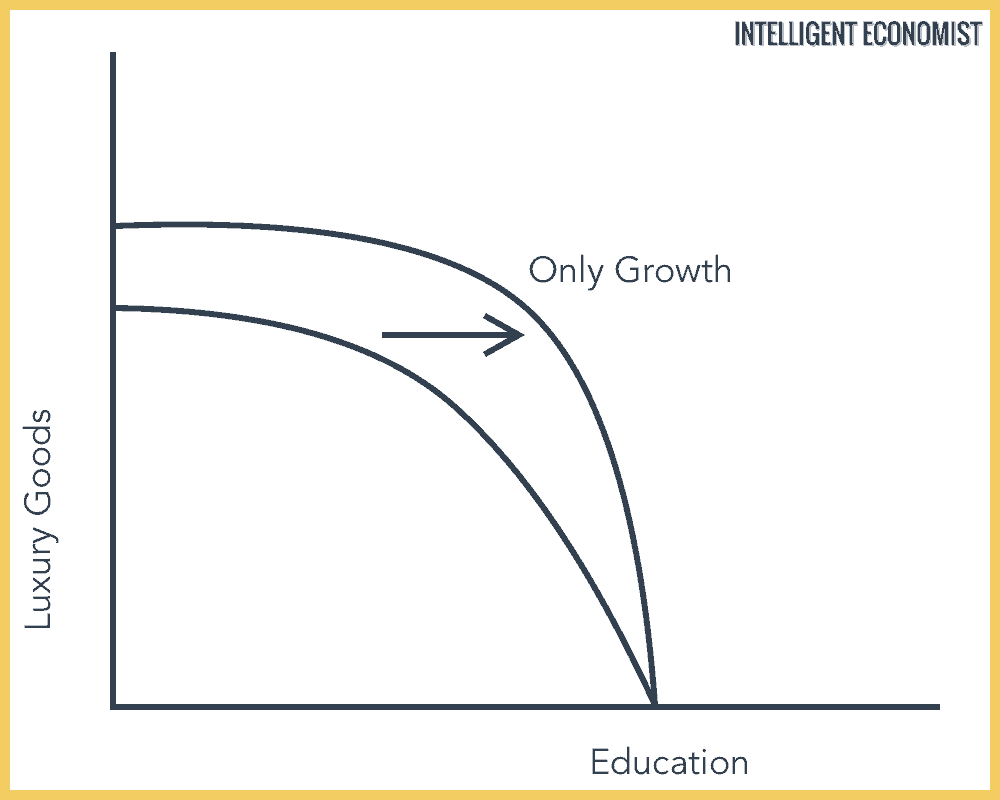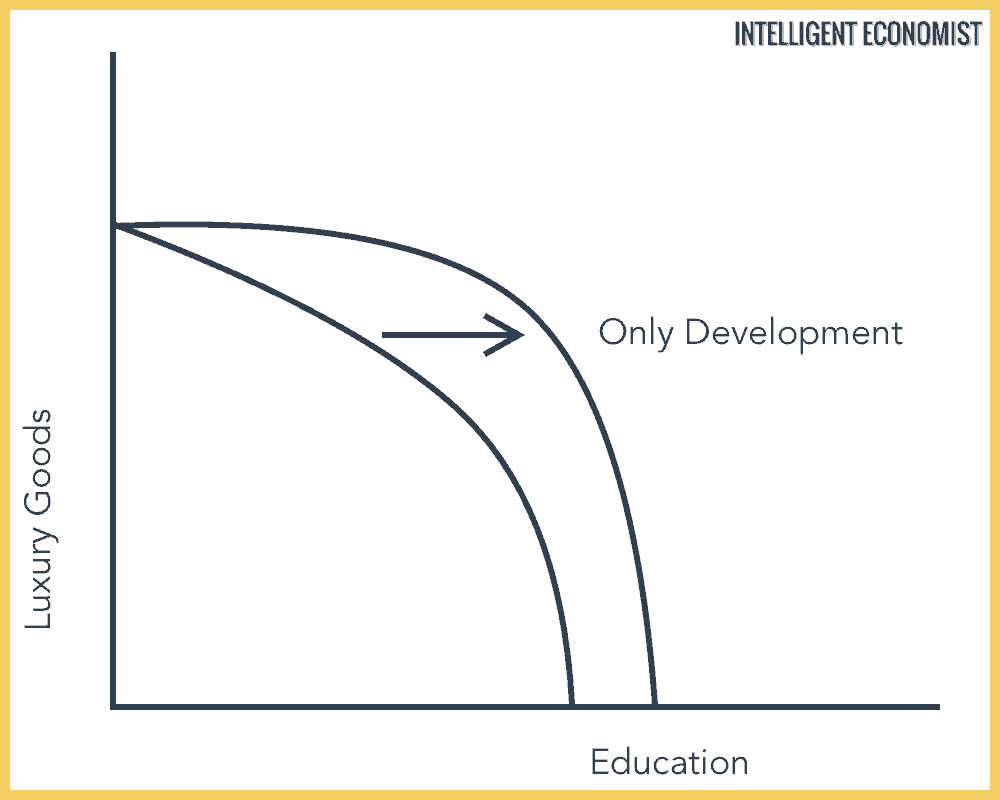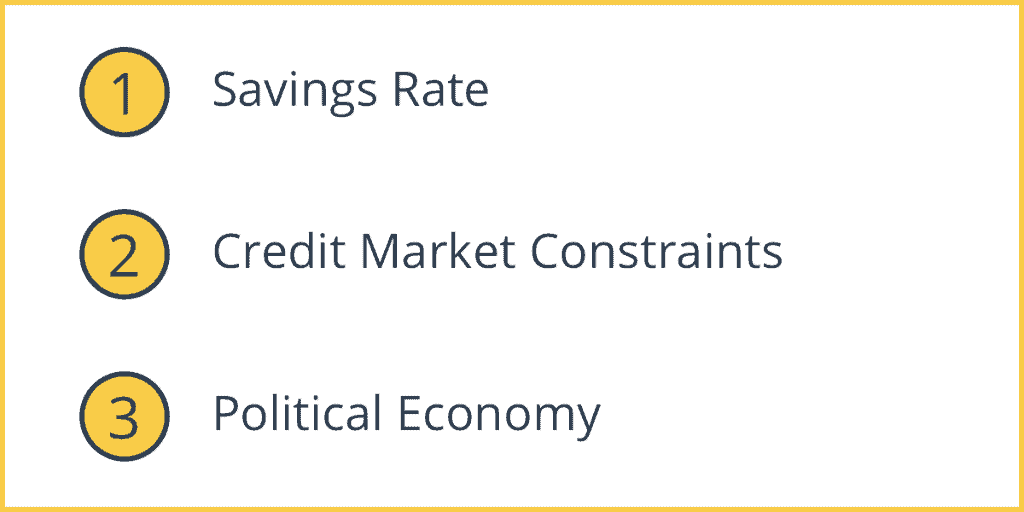A country’s economic development is usually indicated by an increase in citizens’ quality of life. ‘Quality of life’ is often measured using the Human Development Index, which is an economic model that considers intrinsic personal factors not considered in economic growth, such as literacy rates, life expectancy, and poverty rates.
What is the difference between Economic Growth and Development? We will start by defining Economic growth and development. Having economic growth without economic development is possible.
Economic growth in an economy is demonstrated by an outward shift in its Production Possibility Curve (PPC). Another way to define growth is the increase in a country’s total output or Gross Domestic Product (GDP). It is the increase in a country’s production.
Economic Growth Occurs When
- There is a discovery of new mineral/metal deposits.
- There is an increase in the number of people in the workforce or the quality of the workforce improves. For example, through training and education.
- There is an increase in capital and machinery.
- There is an improvement in technology.
Economic Development Occurs When
Measures of economic development will look at:
- An increase in real income per head – GDP per capita.
- The increase in levels of literacy and education standards.
- Improvement in the quality and availability of housing.
- Improvement in levels of environmental standards.
- Increased life expectancy.
Difference between Economic Growth and Economic Development
We can also have a situation where there is economic growth and economic development, i.e. an increase in luxury goods and education.
Development alleviates people from low standards of living into proper employment with suitable shelter. Economic Growth does not take into account the depletion of natural resources, which might lead to pollution, congestion & disease. Development, however, is concerned with sustainability, which means meeting the needs of the present without compromising future needs.
A. Economic Growth Definition
Economic Growth is an increase in a country’s output.

B. Economic Development Definition
Economic Development is an improvement in factors such as health, education, literacy rates, and a decline in poverty levels.

The Relationship between Inequality and Economic Growth

Poverty has come down most when inequality has fallen, and there is high economic growth. Initial low levels of inequality are associated with more negative elasticities of poverty reduction concerning growth. Higher initial inequality results in less effect on poverty with an increase in economic growth.
1. Savings Rate
The marginal savings rate changes with decreasing or increasing income. The marginal savings rate is the fractional decrease in saving that results from a decrease in income.
2. Credit Market Constraints
The poor can’t get loans.
3. Political Economy
Governments pursue poor policies (redistribution policies) trying to reduce inequality, which results in high inflation, high deficit, and lower growth. However, there doesn’t seem to any relationship between inequality and economic growth empirically. But, higher economic growth leads to lower levels of poverty (not the same as inequality)
Growth Effect
The positive growth of people’s income and no change in income leads to a decrease in the poverty level.
Redistribution Effect
If there is a rise in inequality and mean income remains constant, then poverty will rise.


Please explain Low level of economics development in simple words..so that i can understand..
How to explain economic growth taking place using the diagram or possibility curve